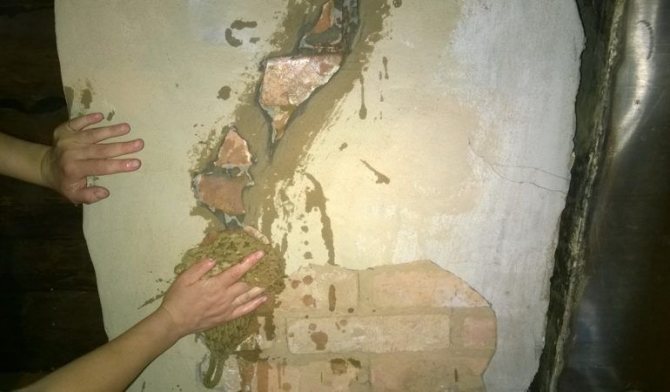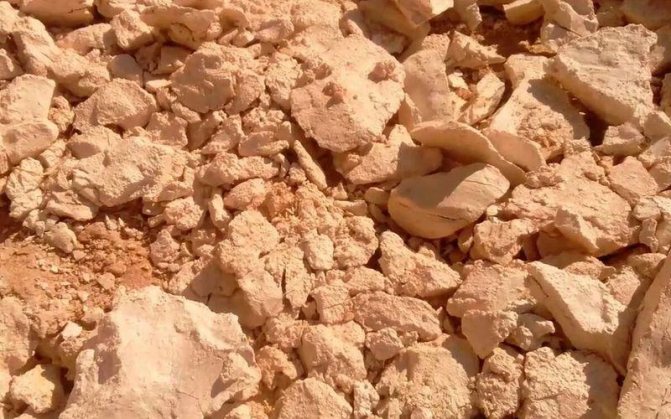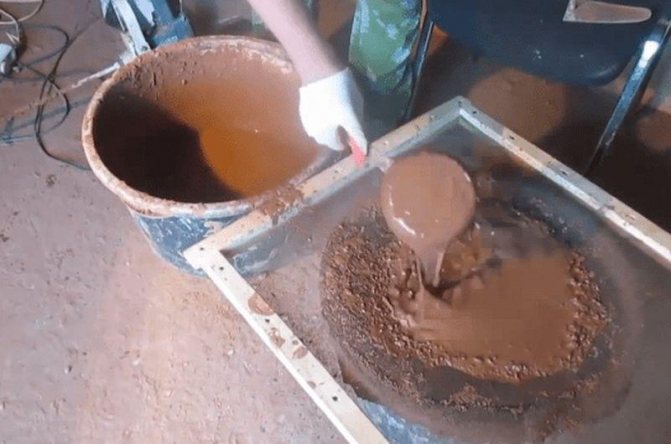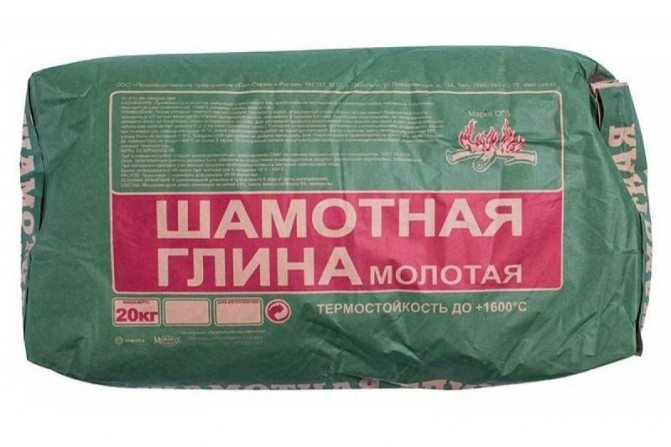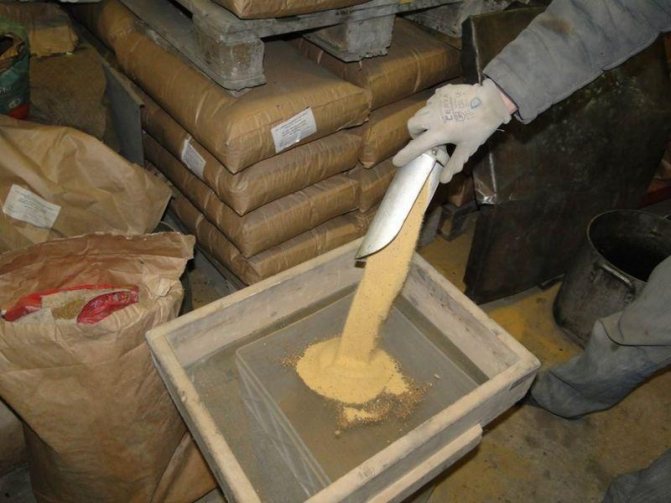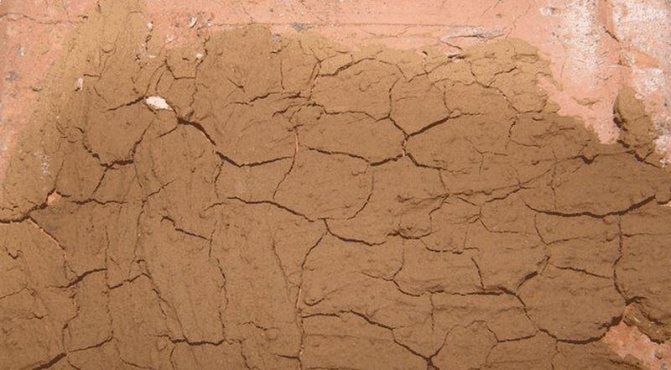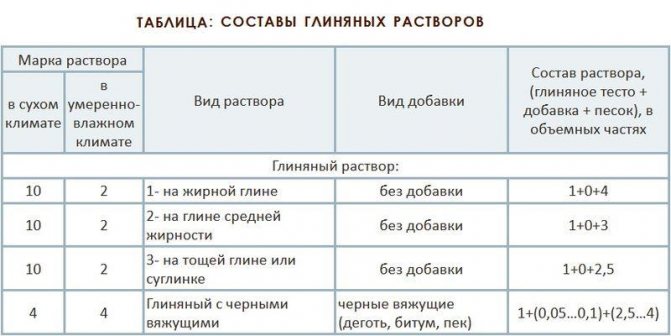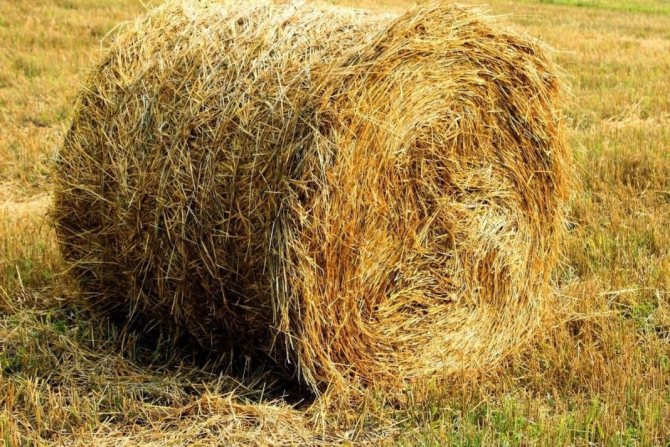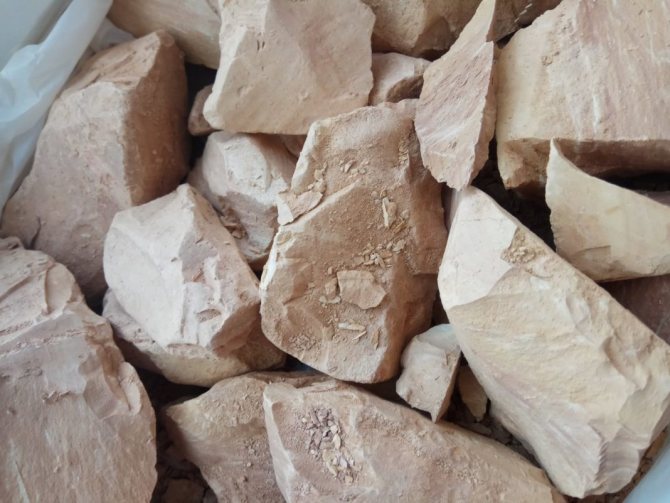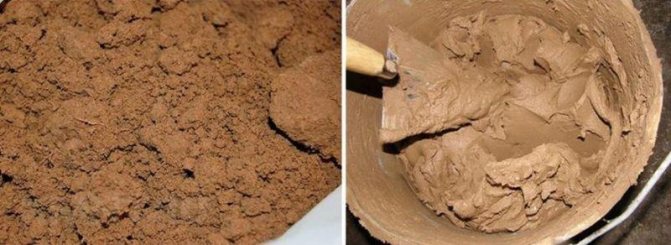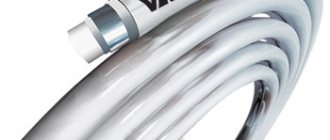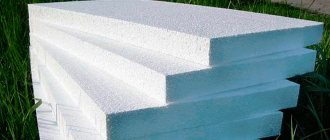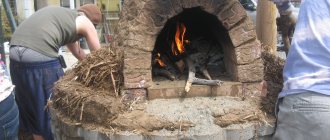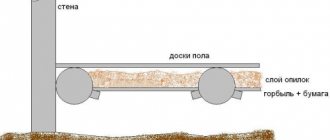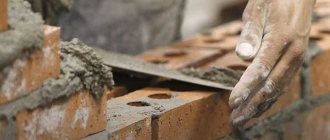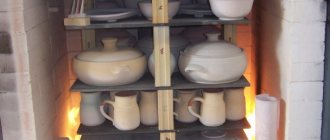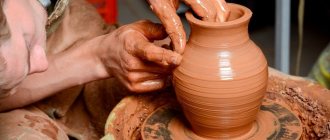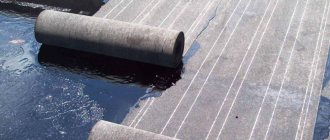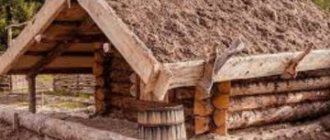Chamotte clay - a synthesis of natural and human
Chamotte is a word borrowed from the French language, which recently sounds with renewed vigor. Tired of unnatural delights and plastic gloss, people tend to natural materials, among which fireclay occupies a prominent place. However, it is not possible to obtain such material without human participation - special white kaolin clay must be burned in rotary kilns at a temperature of about one and a half thousand degrees Celsius, since it is in such extreme conditions that it completely loses its plasticity, loses all the water associated with its molecules ...
Thanks to this, chamotte acquires properties close to those of a stone. The resulting pieces of chamotte are crushed in special mills and already in this form are sold in the form of building dry masses or are used for the production of chamotte bricks. It should be noted that not only builders, but also designers are not indifferent to chamotte. Chamotte clay has some kind of inexplicable restrained beauty, special texture, natural spirit, thanks to which things made of this material are able to decorate even the most refined interior, so this method of application is not at all uncommon. In a creative environment, fireclay clay is used to make ceramic dishes, tiles, and figurines.
Builders, in turn, try to use textured fireclay not only for facing surfaces exposed to high temperatures (all the same fireplaces and stoves), but even for the facades of houses!
Chamotte clay is also found in hardware stores under the name kaolin - the essence does not change. The color of this material ranges from creamy white to gray-brown. Chamotte is actively used both for creating a mortar for laying bricks, for mixing mortars, and for plastering. When buying, make sure that the clay has not been stuck on the shelves for a long time - otherwise it could lose its properties, because the stores do not always withstand the conditions it needs. Prolonged exposure to humid air can completely ruin the chamotte, just like it happens with cement. It is more expensive to use such material.
Clay mortar, application and manufacture
Clay mortar for laying stoves is made mainly by professionals. This work is not so simple, it will require a lot of time and effort. Although it is not difficult. Although it must be said that it is not really clay, it is mostly made with additives. For example, clay mortar for plaster is mainly made with lime additives, then the mixture lays down quite elastic and correctly.
This composition is the best option for laying the working parts of the fireplace, it will also perfectly withstand coal firing in various stoves. It is also successfully used when laying a barbecue. True, it is worth saying that for the manufacture of foundations, it will not suit for sure. But in some cases, it is simply irreplaceable.
Attention: Experienced stoves can easily determine the fat content of clay and simply by touch. If you do not have such practice, then you will have to do everything according to technology. And do everything as accurately as possible.
- Clay is considered to be the most noble material for construction, since you can make a mistake with it and then correct the mistake. If the masonry made on cement mortar cannot be disassembled without spoiling, then the oven on clay mortar can be disassembled quite simply, without leaving waste.When carrying out repair work, the cladding material and bricks laid on a clay mortar can always be preserved in their original form.
- When building a stove, on average, it takes about three buckets of mixture for a hundred stones. From this calculation, you need to determine the volume of material and mixture you need.
- If the seams are thicker, then the clay between the bricks will not be able to withstand temperature changes and will begin to collapse, forming cracks into which air penetrates. This leads to a deterioration in traction, an increase in fuel consumption, and also to the possibility of carbon monoxide entering the premises where people live.
- It is believed that the strength indicators of the mixture can be increased using a variety of impurities. For example: ten kilograms of clay will require a kilogram of cement, as well as one hundred to one hundred and fifty grams of table salt. But our ancestors hardly used cement, and the stoves, made by their hands, stood for decades. If all the constituent parts are selected correctly, then nothing will need to be added to the clay solution, but a variety of recommendations, this is only as an option for safety net.
- The mortar used for masonry must be greasy (which means normal) and plastic. When dry, the fatty mixture begins to reduce its volume and crack, the skinny one does not have the required strength. There are deposits of clay, from which a solution with normal fat content is made without the need to add sand. In some cases, it is necessary to mix several types of clay, which are mined in different places, while observing a strict dosage.
- At the very beginning, they are mixed in a dry version, after which they dissolve with moisture. If the clay grade is more oily, then it is necessary to add sand to it, the amount of which can be very different - from half to five parts.
Attention: In most cases, clay to mortar is in a two-to-one or one-to-one ratio. Water makes up about one fourth of the volume of clay.
- A significant amount of sand interferes with fatty varieties, in which there should not be any impurities. It is sieved in advance using a sieve with cells in the light one and a half to one and a half millimeters, at least. Skinny clays will have to be tortured, which means that it becomes necessary to remove excess sand from it.
Chamotte clay - how to breed and what to mix with?
To say that this material is easy to work with would not be entirely correct - many beginners using fireclay complain that the plaster based on it cracks and crumbles, and the masonry on fireclay mortar does not hold firmly. It should be remembered that during firing, clay almost completely loses its plastic properties, and our task, when mixing a solution, at least partially returns these characteristics to it or gives them to the solution using other components, for example, special glue or ordinary quartz sand.
Solution preparation rules
Preparation of clay mortar
To prepare the binder, you will need:
- Pour in the prepared amount of clay and a small amount of clean water.
- Leave the mixture for 12-48 hours to achieve a high-quality soaking of the clay. The room in which the container will stand must be dry and warm enough.
- Stir the clay with water occasionally.
- Add sand and mix all ingredients thoroughly to obtain an even consistency of the solution.
- Salt and other components should be introduced gradually, constantly stirring the composition.
You can check the plasticity of the finished solution by making a 1.5 cm thick flagellum out of it. Its length should not exceed 20 cm. Then collect it in a ring and watch the changes. When cracks appear, it is necessary to add clay to the solution, but if there are none, then there is not enough sand in the mixture.
The tourniquet turned out to be plastic and only a few small cracks appeared on it? Then it's time to start laying the stove! Remember that you can achieve excellent masonry results only if you use high-quality ingredients and their correct ratio in the composition, so you should carefully study this issue before starting work!
pechiexpert.ru
How to breed and with what to mix fireclay clay - step by step scheme
Step 1: infuse the powder on water
To prepare a solution of chamotte clay for plaster, we need a pack of chamotte powder. Pour the powder into a container, gradually adding water, until the powder is completely covered with water. Before diluting the final solution, chamotte clay should be infused for at least three days.
Step 2: making the final batch
After we have stood for the right time, stir the resulting mixture again, adding a little quartz sand and water, if necessary, if necessary. If the solution turns out to be liquid, you can sprinkle more powder, dilute too thick with additional water. In its consistency, the ready-to-use solution should resemble sour cream - with such a density, it will not drain from the surface and will stick well to the wall.
Of course, you can also purchase a composition for instant mixing - it does not need to be insisted for three days, but it also costs more. In any case, PVA building glue should be added to the resulting composition, it will not hurt to reinforce such a solution with crushed fiberglass. For plastering with such a solution, special skills are not needed - just prepare a large and small spatula in advance and apply the solution evenly to the surface.
Step 3: preparing the surface
Based on the reduced plastic properties of chamotte, it is imperative that the surface that you want to plaster be provided with a mesh, and to improve adhesion, walk with a good primer. Since we are talking most often about plastering stoves and fireplaces, then the primer must be heat-resistant, and the mesh must be metal. In this case, you compensate for the plasticity of the chamotte and achieve the highest refractoriness of the plaster.
Optimal proportions of ingredients for solution preparation
Correct clay mortar
Depending on the properties of the clay used, the ratio of ingredients in the solution can be completely different. So, to prepare a mixture of lean clay requires a decrease in the amount of sand in the solution. Oily clay requires a 2-fold increase in the proportion of sand, which should also be taken into account. The best ratio of clay to sand in a mortar is 1: 1.
To obtain a strong and durable structure, the mortar should be prepared according to the following scheme: mix 10 kg of clay, 1 kg of cement and 150 g of salt. Although it is quite enough to choose high-quality materials and mix them in the correct ratio, even without the use of additional impurities.
How to prepare masonry mortar?
One or another type of clay oven mixture purchased in a store is prepared according to the instructions on the package, there are no questions here.
If it is decided to use a home-made mortar for laying the stove, then the main conditions on which the quality of the mixture preparation depends are two - the correct preparation of the components and the observance of the proportions of the components.
Using the example of a clay-sand mortar, we will consider the preliminary operations and mixing rules.
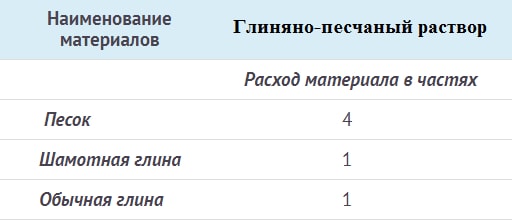
Using the data in this table as a basis, you can achieve high quality masonry mortar by slightly adjusting the proportions with reference to the parameters of the components used.
The natural clay prepared for the stove must be cleaned of foreign impurities - everything foreign (plant remains, stones, debris) is manually removed, and large lumps are broken. Then the mass is rubbed through a metal mesh with a mesh size of approximately 3 mm.
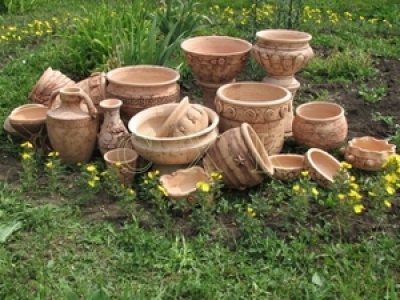

Such "dry punching" is a laborious procedure, therefore it is more rational to pre-soak the manually cleaned clay for 2-3 days in a tin trough - lay in layers of 12-15 cm, wetting them abundantly, then cover the entire bookmark with water (approximate ratio: 1 part of water per 4 parts clay). After 2 days, mix thoroughly with your feet or with a mixer and rub through a sieve with a mesh of 2-2.5 mm.
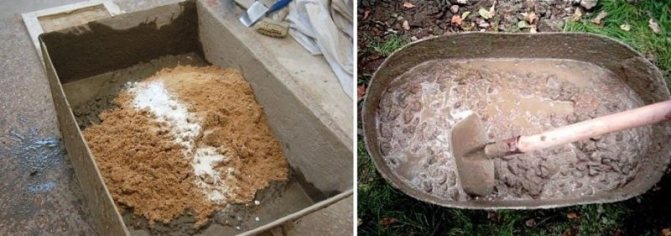

Ways to soak clay
Sand is prepared during soaking. Fireclay sand does not require preparation, except that it is sieved if purchased in bulk. And river sand must be sifted through a sieve with a mesh of 1-1.5 mm, then rinsed with running water in a container until the turbidity disappears and laid out on a clean inclined plane in order to remove moisture residues as much as possible.
There is no strict ratio of the volumes of these components, since any clay initially contains some amount of sand. Therefore, the proportion can be from 1: 2 to 1: 5, ideally the clay should only fill the voids in the solution between the grains of sand.
In order to have an approximate idea of the volumetric ratio of the components, the bucket is filled 1/3 part with a clay suspension when it is ready, and then sand is poured along the edge. The materials are thoroughly mixed in any container to the desired consistency with the addition of the required amount of water. The readiness of the mixture for laying the furnace is checked as follows - it should be held on the trowel after turning its plane by 1800 and slide off it when it is in a vertical position.
Testing the readiness of clay-sand mortar
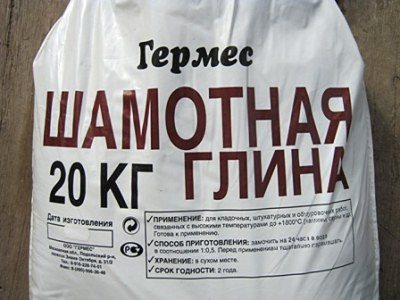

If the mixture falls from inverted to 180
base, then you need to add clay to it. If the solution does not slide off the vertical plane, add sand. After correction, the check is repeated.
By testing the solution in this way, an approximate volumetric ratio of the components is obtained.
Clay-sand mortar is used in furnace zones with temperatures up to 1000 0C. Full or partial replacement of river sand with chamotte sand allows you to use the mixture for laying a furnace with an operating temperature of up to 1800 0С, including in places of direct contact with a flame.
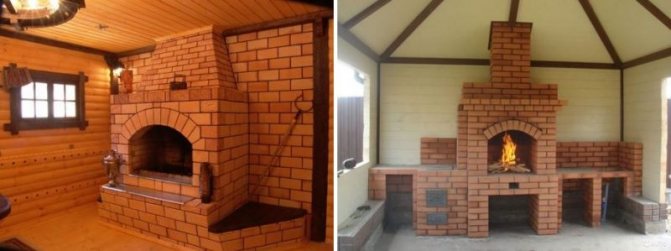

Variants of the classic style of stone ovens
Features of the resulting mixture
Clay solution has certain limits in the field of use. The most suitable for use are the hottest areas: furnace and heat-accumulating structural fragments. This is due to the fact that the resulting solution perfectly withstands high temperatures and direct exposure to flame, but quickly becomes unusable when condensate enters or significant mechanical stress.
On a note! Due to its reliable adhesion, the clay composition is able to serve for many years even under conditions of intensive use at temperatures up to 1000 ° C.
Earthen mortar has been used since time immemorial for the brickwork of stoves
Benefits:
- Environmental friendliness. All components are of natural origin and do not emit substances harmful to human health.
- Availability. Components can be mined, prepared by hand, or purchased at a reasonable price.
- Easy to dismantle. If it becomes necessary to shift or replace a section of the furnace, then the work will not require significant effort. The mixture can be removed well and the bricks remain clean and intact.
But it will take serious efforts and time to obtain the necessary positive properties.
Methods for checking the quality of the obtained substance
In consistency, high-quality clay paste resembles sour cream. The plasticity of the finished mixture is checked in one or more ways.
- The solution is taken with a trowel or spatula, tilted at an angle of 45 degrees. Normal mortar does not drip from the trowel, does not fall from it in lumps, but adheres to the working surface of the tool.
- The mortar is applied to the brick in an even layer (5 mm) and dried. If the composition is "skinny" (contains an excess of sand), then after drying, the paste crumbles from the brick with light mechanical stress. After drying, the greasy solution will be covered with cracks, it contains a lot of clay and little sand. Normal paste hardens in an even layer without cracks. It does not crumble, does not crumble, does not crack.
Photo 1. Method for checking the quality of the mortar: on the first brick, the dried mixture crumbles, on the third it cracked, the best consistency is on the second.
- The plasticity of the finished mixture is checked with a flagellum. A "sausage" with a diameter of 1.5-2 cm and a length of up to 20-22 cm is rolled out of the solution. The flagellum is slowly stretched and a cylindrical object is wrapped around it. A little plastic tourniquet made of skinny clay will burst immediately. The flagella from the fatty mixture will stretch strongly and stick to the surface. A tourniquet made of a normal solution will rupture when stretched when its diameter is reduced by about 20%.
If the solution is too thick (the consistency is thicker than that of sour cream), add water to it and stir thoroughly.
If the solution is liquid (flows down from the spatula), all the ingredients (clay, sand) are added to it in the previously selected proportions and also mixed.
The mixture without adhesives and cement retains its properties after drying. It needs to be filled with water and soaked. If the paste is completely dry, the soak will take several days.
If the composition of the solution includes chemical additives, cement and adhesives, then the dried solution cannot be soaked (such as, for example, mortar). The manufacturer indicates this information on the packaging.
Selection and preparation of sand
Fireclay sand extracted in the river must be sieved
Different sands are needed for the construction of different parts of the furnace. The highest combustion temperature is observed in the combustion chamber. A mixture of clay and chamotte sand is prepared for the firebox. It is made by crushing fireclay bricks. Basically, it is crushed clay after low-temperature firing.
For the masonry of the hull and chimney ducts, a solution based on clay and river sand is taken. Its difference is high uniformity, medium and small particle diameter, roundness of the shape. River sand is very clean, does not contain mechanical impurities and practically does not include organic additives. It is used in the manufacture of plaster: the store is looking for material with the appropriate markings.
Since the sand extracted from the bank or bottom of the river includes different fractions, it must be sieved before work. The solution requires a medium and small fraction: large particles lead to a strong shrinkage of the solution when it dries. In addition, the material must be rinsed. To do this, you will have to make a device from a metal pipe with a tapered end.
How to properly heat the stove to avoid cracking
Stove masonry and a layer of plaster on the fireplace tend to crack over time. It is important to distinguish between minor cosmetic defects, then real problems that require an immediate call to the stove-maker.
- Cracks as thick as a hair appear on the seams of the stove at the moment of heating and disappear when it cools. Such defects are absolutely not dangerous and do not require intervention. If you really don't like their appearance, just cover the walls with tiled tiles and the problem will be eliminated.
- Cracks from 1 millimeter, showing through at the seams between the bricks and not disappearing when the oven cools down, indicate an incorrectly selected masonry mortar. Different coefficients of expansion of bricks and clay cause deformation and cracking.
- Large cracks and displacement of bricks are most often caused by overheating of the stove or improper air circulation in the chimney and firebox. If the “overheating” of the stove is the fault of the owner of the house, then the wrong heat dissipation, when some areas get hot, while others remain a little warm, is the fault of the master stove-maker.
- Closed, broken cracks that cross the walls horizontally or vertically at the seams are a sign that something is wrong with the foundation. This problem can affect both new stoves and old ones that have stood for many years. It makes no sense to cover up these cracks, the stove must be urgently moved before it collapses entirely.
Next, let's figure out how to "treat" oven defects in cases where it is necessary.
As mentioned above, one of the common causes of cracking in masonry is the so-called overheating. This happens when the oven is not properly operated, it heats up too much or abruptly and cools down. Stoves in country houses are most susceptible to this, where the owners come in winter only occasionally.
But you can also overheat the stove of a residential building, which works throughout the winter. Smooth warm-up, full-throttle ignition with open blower and damper, as well as the use of the correct fuel - a guarantee of a long stove life and no cracks.

